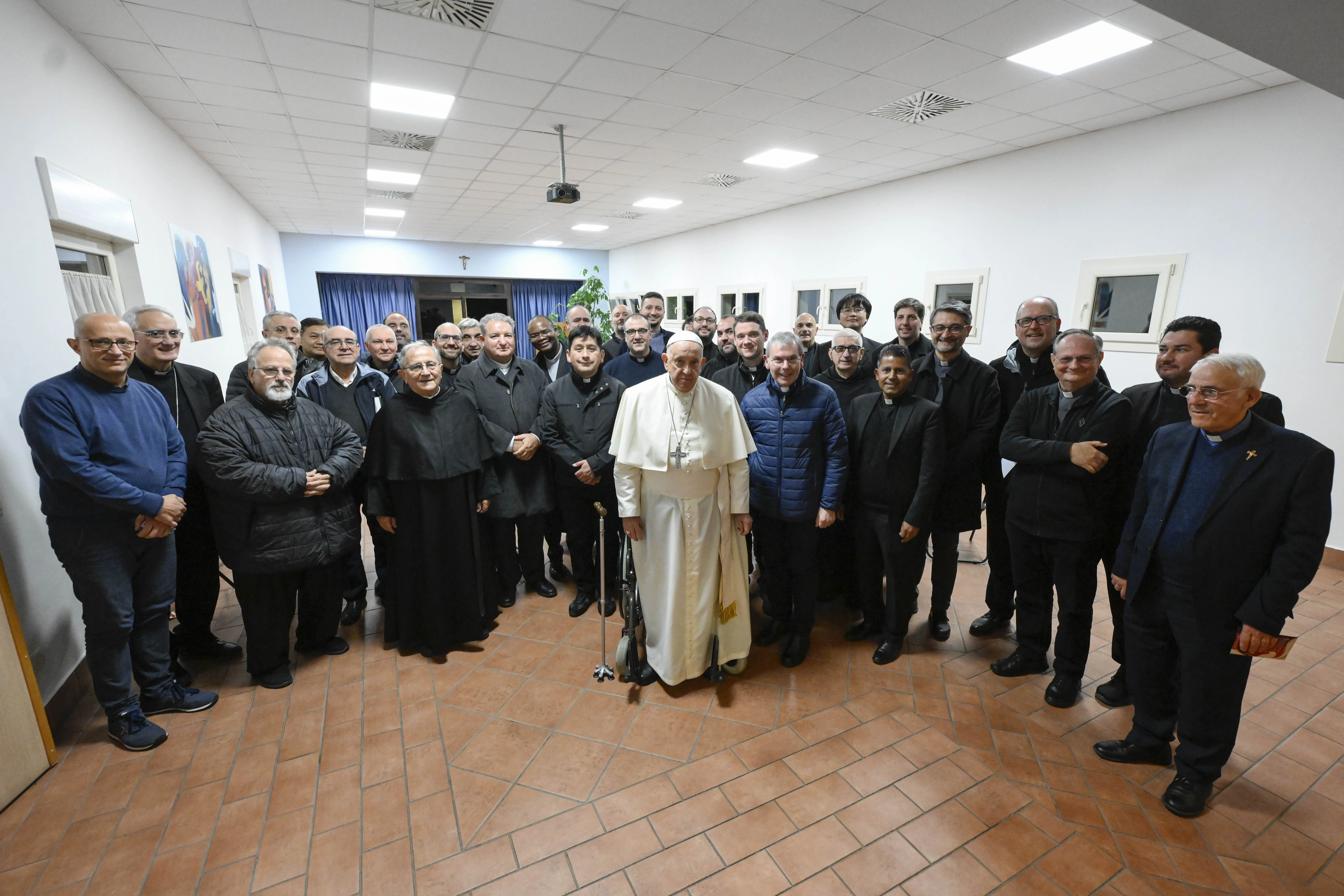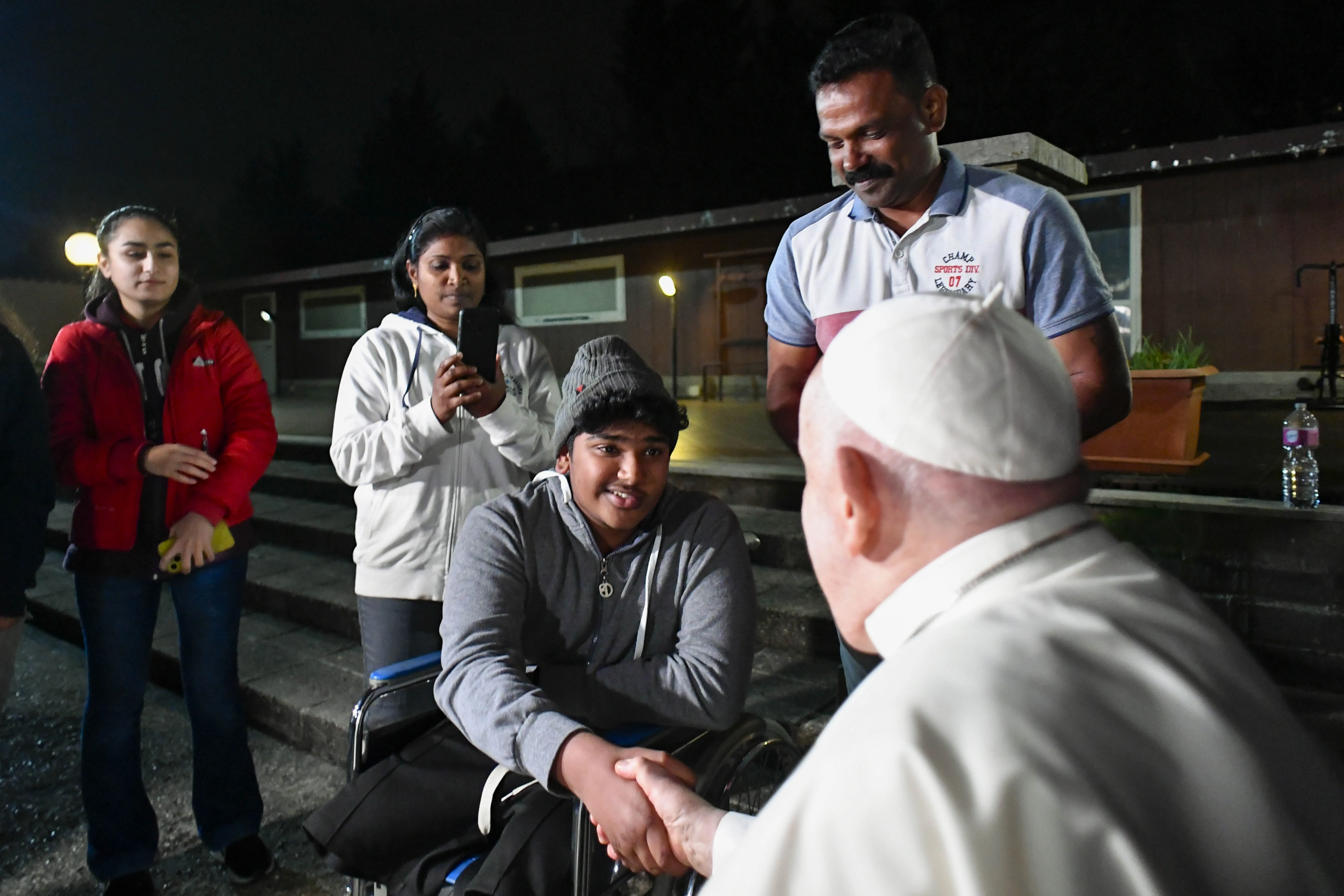
Editor’s note: The following homily given on the feast of the Dedication of the Basilica of St. John Lateran at the Church of the Holy Innocents, New York City.
The Church celebrates liturgical commemorations of dedications of the four papal basilicas in Rome: St. Peter’s; St. Paul-Outside-the-Walls; St. Mary Major; and, today, St. John Lateran.
A bit of a history lesson and then some applications.
The Emperor Constantine issued his Edict of Milan, “legalizing” Christianity, in 313 A.D. A mere eleven years later on this date, in 324, Pope Sylvester dedicated the cathedral church of Rome on property belonging to the Laterani Family – hence, “Lateran” in the name of the basilica. Most people are surprised to hear that this church is the cathedral of Rome, thinking rather that that honor belongs to St. Peter’s, but that is not the case. The Lateran Basilica’s place in church history is inscribed on its façade: Mater et caput omnium ecclesiarum (mother and head of all churches); further, it is called an “archbasilica,” to make the point. This site was the home of the popes from the fourth century until the Avignon captivity of the papacy in the fourteenth century; here also were held five ecumenical councils.
In the modern era, popes offer Holy Mass at St. Peter’s Basilica for the formal institution of their Petrine ministry. However, within a few days, they travel to St. John Lateran, their cathedral, to occupy its cathedra, thereby taking possession of their cathedral church, thus completing their inaugural rites.
The church was originally dedicated to Christ the Savior, and later co-dedicated to St. John the Baptist and St. John the Evangelist. A legend holds that Constantine was baptized in its baptistery. We know for certain, though, that the Lateran’s baptistery was the only one in Rome for generations. About which, more in a moment.
For a long time, a theological and liturgical principle held sway: On the Lord’s Day, there could be only one offering of the Eucharistic Sacrifice under the headship of the bishop. With the passage of time and as Christianity grew and prospered, the numbers of believers could not be accommodated in one liturgical celebration, giving rise to priests celebrating the Eucharist in different locations. However, the unity of the Eucharist was maintained and highlighted by an interesting innovation to the papal liturgy: At the fractio, a particle of the Pope’s consecrated Host was borne by deacons to the celebrations being presided over by priests around the City. With the ongoing march of time, as dioceses were created elsewhere, a particle of the papal Host was sent to those places – as well as water from the Lateran Basilica’s baptismal font.
The Church has always had a great reverence for houses of worship, not because God needs them – but because we need them. How so? First of all, because as an incarnational religion, the Church takes the physical world very seriously; secondly, because a church building is the meeting place for the Church, which is the mystical Body of Christ; even more so, it is the meeting place between Heaven and earth. If you have ever participated in the ceremony to dedicate a church, you will recall that, yes, it is very long, but more importantly, it parallels the baptismal liturgy with its symbolic washings and anointings.
At the level of sign and symbol, we see how highly the Early Church valued ecclesial unity. That unity is of two degrees: diachronic and synchronic. Diachronic unity refers to the oneness in faith down the ages; synchronic unity refers to that unity across the vast expanses of the Church Universal at any given moment. At the close of World Youth Day in Rio de Janeiro in 2013, Pope Francis urged the participants, some thought jokingly, Hagan lío! (Make a mess!). Regrettably, we have seen a massive mess over the past nine years: Bishops in Argentina being told that they can admit the divorced/remarried to Holy Communion; bishops in Germany and Belgium advocating the blessing of same-sex unions; the German “Synodal Way” calling for every kind of theological and moral aberration imaginable; the “Synod on Synodality” devolving into a forum for malcontents and dissidents, rather than serving as a listening post for the Holy Spirit.
The current “mess” would shock early believers to the core as an affront to both diachronic unity and synchronic unity as positions are espoused never before conceived, with those same positions causing disunity between and among local churches (dioceses and countries). Loyal sons and daughters of the Church sorrow over these assaults on Catholic unity – as they should.
However, we must not despair. In a very long paean to what in theological terms we call the Church’s “indefectibility,” Lord Babbington Macaulay, no friend of Catholicism, in the nineteenth century, nonetheless could assert: “There is not, and there never was on this earth, a work of human policy so well deserving of examination as the Roman Catholic Church.” Speaking from the perspective of faith, in 2019, Pope Benedict XVI sought to calm our fears with these words: “In the end, the awareness that the Church is and must remain united has always prevailed. Its unity has always been stronger than internal struggles and wars.”
All of this is grounded in Our Lord’s High Priestly Prayer, offered on the night before He died: “Let not your hearts be troubled; believe in God, believe also in me” (Jn 14:1). In other words, this is Christ’s Church; He is faithful, even when we are unfaithful. And most importantly and consoling of all, He will never abandon the Spouse for whom He died.
In that spirit, let us have recourse to the Collect prayed for the feast of the Chair of St. Peter:
Grant, we pray, almighty God, that no tempests may disturb us, for you have set us fast on the rock of the Apostle Peter’s confession of faith. Through our Lord Jesus Christ, your Son, who lives and reigns with you in the unity of the Holy Spirit, God, for ever and ever. Amen.
If you value the news and views Catholic World Report provides, please consider donating to support our efforts. Your contribution will help us continue to make CWR available to all readers worldwide for free, without a subscription. Thank you for your generosity!
Click here for more information on donating to CWR. Click here to sign up for our newsletter.









Sometime ago, I read an artcle, it is said that 70% of our Catholic Faithfuls do not believe in the PRESENCE of the LORD our GOD Christ Jesus is within the Holy Euchwrtrist! What went WRONG with the TEACHING OF OUR Holy FAITH? “Unless you eat of my flesh and drink of my bloold, you shall not have life within you!”” John 6:53! “Heaven will pass away, the earth will pass away, my words will not pass away!” Matt. 24:35
We all should try to speak less of THEOPLOGY, but with full strength to help each other who are within the PRECIOUS Body of Christ Jesus our Lord to understand what HE Said! Theology often time is the CROWN OF THROWNS on HIS PRECIOUS HOLY HEAD! The Intellectual PRIDE often brighs PAIN TO THE READERS…! “Seek ye first UNDERSTANDING!” ST. PAUL
“If you love me, KEEP my COMMANDMENTS!” John 14:15
“My sheep hear MY VOICE! I call them, they follow me, I am the GOOD SHEHPERD” Matt. 24:35
the sin-nod-ing to sinning….
…. will be givens its time it seems by the Beloved, but this too will be vanquished in the Alliance Victory of Jesus and Mary already won….
When in Rome as a candidate for ordination to the priesthood at the Angelicum, a pontifical college I did as like Rome students do when receiving faculties, examination at St John Lateran. Learned St John’s was the actual seat of the bishop of Rome.
After receiving faculty for hearing confession, absolution of penitents I was examined by two learned religious order men. My last question after finally satisfied with my responses was, Who would you hold to deeper inquiry, and greater responsibility for sin? A layman or a priest? My first thought was equally. Although, with further thought, I realized during the exam I was held to a much higher standard of competence and responsibility. My answer was the clergy. They smiled approvingly and continued to embellish.
Reading [hang hanging participles] Fr Stravinskas’ lament over the catastrophic [what other word honestly fits?] events diluting the faith, his specific example the Argentine Papal exchange of letters of permission given for open season on the Eucharist, confession for grave sin swept into the bin, a what if mental image appeared, my siting in the confessional listening to Pope Francis confess. Would I simply pass judgment [here there is no, Who am I to judge? It’s where judge me must or be judged harshly by the supreme Judge] on the usual peccadilloes we all commit. Or should I dig deep to the bone perhaps upsetting His Holiness? Conscience says to me dig deep and hard, because you’re convinced there’s question of great wrong committed. “Dear Pope Francis, aren’t you aware the exchange of letters, your oblique response indicating to Argentina and consequently the World an affirmation for reception of the Holy Eucharist while manifestly living in ‘irregular unions’, adultery, same sex relations, fornication? And virtually all sin? What! No Your Holiness I can’t absolve you unless you acknowledge the grave injustice. No, your conscience is your own and God will judge that at the Final Judgment. But here in this life I’m required to be true to my conscience and the faith, and yes, my concern for your salvation. I can only determine what must be done in context of what is manifest. If you did not intend open season for the Eucharist, why did you not correct it? After all, your Secy of State Card Parolin publicly announced this [what the letters implied] was Magisterial doctrine. No Your Holiness, I won’t accept a convoluted response that doesn’t respond clearly to the obligation I have for your salvation. You must accept responsibility and repent. Go in peace and reflect on what I said’. A simple priest to a pope, but nonetheless his confessor.
Correction: When in Rome as a candidate for ordination to the priesthood at the Pontifical Beda College.
An impressive examination of the soul! I tend to view my own sins lightly, whereas, others are offered sterner admonition.
We know God is patient and loving with us, indeed we are like sheep, yet we have the good shepherd to tend to our missteps!
It must be a test to winkle the offence out of some! Challenges abound and as we ask for our daily bread, so we ask for the forgiveness of our sins. The other bit of good news, is that He gives us the divine prerogative and responsibility to forgive others!
Blessings